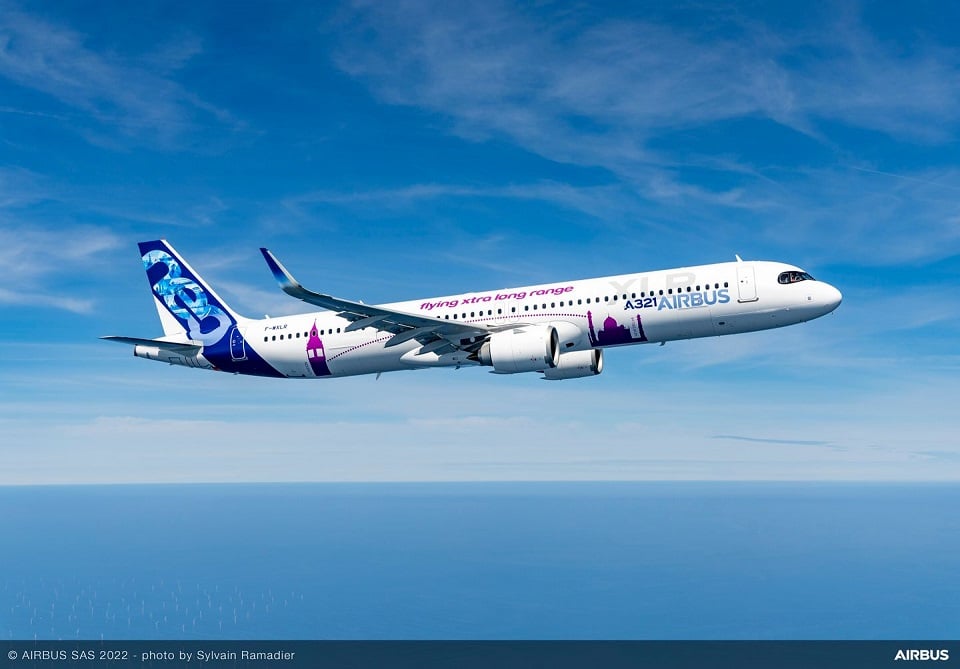Airlines
Airbus A321XLR jet faces range gap after design safeguards

Airbus has apparently been struggling with a gap in the predicted range of the aircraft in a recent development involving the much-awaited A321XLR. In order to obtain certification for the new long-range, single-aisle aircraft, agreements about the necessary design safeguards were established with European regulators. This adjustment is the result of those agreements.
DGCA to deregister two more SpiceJet aircraft on lessor’s request(Opens in a new browser tab)
Despite being creative, this design generated questions from regulators due to worries about potential fire dangers and potential difficulties during an emergency evacuation. Unintended weight consequences resulted from the necessary modifications, which also included strengthening the structural elements and adding a specific protective liner to the fuel tank.
In response to a proposal for a major modification in the type design of a big aircraft, the A321XLR, the European Union Aviation Safety Agency (EASA) issued an important consultation document in December 2022. This aircraft included a one-of-a-kind design element, an RCT (Rear Centre Tank) located beneath the cabin floor, which necessitated additional safety concerns not typically encountered in regular aircraft design practices.
Qantas has selects the Airbus A350-1000 for ‘Project Sunrise’(Opens in a new browser tab)
To meet these specific issues while maintaining the highest safety standards, EASA proposed the establishment of special circumstances (SCs). These would impose severe safety procedures to offset the risks associated with the unusual RCT design. By enforcing these, EASA hoped to ensure that the A321XLR’s occupants are adequately protected in the event of an external fire, fuel vapor ignition, or fuel tank explosion. Moreover, the crashworthiness requirements seek to prevent fuel spillage that could potentially lead to hazardous fires in survivable crash scenarios.
According to the report, Initial weight enhancements were anticipated to add 200–300 kilos, but recent industry insights point to a heavier 700–800 kilos. The jet’s maximum range was originally estimated to be 4,700 nautical miles (8,700 km), however it is anticipated that this significant weight increase will reduce it. Industry insiders realistically advise a reduction of about 200 nm (370 km), highlighting its operating range, which is closer to 4,000 nm.
The range of the A321XLR is particularly significant for airlines like New York-based JetBlue, which is anticipated to be among the first to fly the new model. JetBlue intends to create routes in Latin America and increase its presence in Europe with the A321XLR.
Despite these obstacles, Airbus is committed to completing the A321XLR’s certification by the end of the year, with the first aircraft deliveries anticipated in the second quarter of 2024.

Airlines
Air India Express Aircraft Engine Part Falls Outside Delhi Airport; DGCA Orders Probe

The Directorate General of Civil Aviation (DGCA) has launched an inquiry following reports that metal fragments were discovered at Delhi’s Indira Gandhi International Airport after an Air India Express flight made an emergency landing on Monday evening.
The emergency landing was prompted by a detected engine fault, but fortunately, the landing was executed safely without any injuries to the passengers.
The situation began when crew members of the Air India Express flight reported an engine issue, leading to the emergency landing. The DGCA has confirmed that a thorough investigation is underway and has directed that the aircraft undergo a comprehensive safety inspection.
Air India Initiates Construction of MRO Facility at Bengaluru Airport
The discovery of metal debris outside the airport has raised concerns, prompting the DGCA to probe whether these fragments are linked to the aircraft involved in the emergency landing. Authorities are particularly focused on whether the metal pieces, which were found near the airport, originated from the same Air India Express flight that experienced engine trouble.
While preliminary assessments suggest that the debris could be a broken blade from an aircraft engine, the exact source remains unconfirmed. The airline has yet to verify if the metal fragments are from their aircraft.
Airbus Beluga to Deliver Spare Parts for Stranded British Airways A350
The Delhi Police, working in conjunction with the DGCA, have initiated their own investigation to determine the origin of the metal pieces. A technical team is set to analyze whether the fragments are associated with the aircraft in question. As the investigation continues, a case has been filed with the airport authority to address the matter.

 Travel2 months ago
Travel2 months agoAir India to Expand US Operations with Three New Routes After a Decade

 Aviation2 weeks ago
Aviation2 weeks agoNew EU Carry-On Rules Begin September 2024: What to Expect

 Airlines2 months ago
Airlines2 months agoAir India Rolls Out A350s for Delhi-New York JFK and Newark Routes

 Travel2 months ago
Travel2 months agoWhy We Should Avoid These Stamps in a Passport

 Airport2 months ago
Airport2 months agoTop 10 Largest Airports in the World by Size

 Aviation4 weeks ago
Aviation4 weeks agoMeet WindRunner: The World’s Heaviest and Largest Aircraft Ever Built

 Aerospace2 months ago
Aerospace2 months agoChina’s Fighter Jets Turn Wings into Autonomous Drones

 Aviation4 weeks ago
Aviation4 weeks agoComac C919 Moves Closer to Securing EU Certification with EASA







